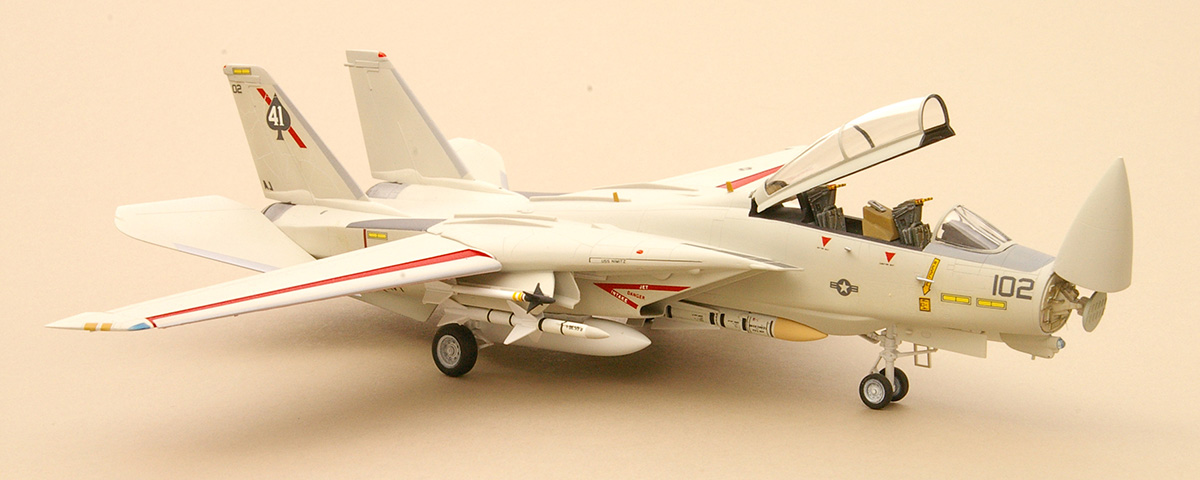Fujimi’s 1/72nd-scale kit of the Grumman F-14A, which first appeared in 1988, is one of the most detailed examples available of the U.S. Navy’s legendary Tomcat.
Cockpit construction starts with an overall coat of light gray, FS-36231. The full set of instrument panel and cockpit side console decals provided helps to create the look of a busy flight deck. Finish the cockpit by painting the GRU-7A ejection seat frames flat black, FS-36038, and the cushions dark green, FS-34087. Next glue the completed cockpit into the starboard fuselage section along with the nose gear wheel well, which fits into the locating notches just below the cockpit tub.
Paint the intake tunnels white, FS-17875, and the engine faces silver. Assemble and fit the tubes that form the main portion of the engines together and attach them to the bottom fuselage part. Then glue this entire assembly to the front fuselage section and set aside to dry.
The Tomcat’s swingwings can be built so they move, but this isn’t a good idea because the attachment points break easily. The wings also have an extended flap and slat feature that can only be used if they are set in the full forward position. Next attach the ’cat’s twin tails.
At this point you’ve finished basic construction. Since this kit is well engineered, little filling and sanding should be necessary. If you’re going to display your model with the slats open, paint the underside and wing leading edges red, FS-11136. The inside of the landing gear bays and doors should be gloss white, along with the cockpit boarding ladder and the foot-steps.
Another option with this kit is to show the AN/AWG-9 fire-control radar antenna exposed and the nose cone in the open position. Paint the circular antenna aircraft gray, FS-36473, then dry-brush it with silver to bring out the details. Add a few pieces of stretched sprue to duplicate the wiring harness on the electronics package.
Virtually all frontline F-14 squadrons sent pilots and radar intercept officers to the Topgun school at Naval Air Station Miramar. Since students there piloted the same aircraft they flew from their respective carriers, no special markings were applied. In December 1977, the Navy’s light gull gray and white paint scheme for most aircraft was changed to overall flat gull gray, FS-36440. The Fujimi kit has markings for three aircraft: a CAG Tomcat from VF-111 (the “Sundowners”), a camouflaged ’cat from the Iranian air force and an F-14A from VF-41. The Black Aces markings seem the best option for an aircraft that participated in the Navy’s Fighter Weapons Training program. VF-41’s Tomcat appears in the early “low-vis” overall gray scheme, with national insignia, squadron markings and warning stencils in dark gray. The only bright colors are the red turbine warning stripes, the jet intake warnings and a deep red stripe on the vertical tail that slants beneath the dark gray ace of spades.
Paint the wheel wells and landing gear legs gloss white and wheels “tire black.” The kit contains parts for a full weapons load, and while active missiles were never carried on training missions, it would be unusual for a Tomcat to be missing its claws. Paint the exhaust nozzles dark metallic gray and attach them to the fuselage.
Some have said that the Navy’s change to more subdued colors was inappropriate for this robust fighter. But considering the F-14’s role, that shadowy scheme seems appropriate for a prowling feline.





